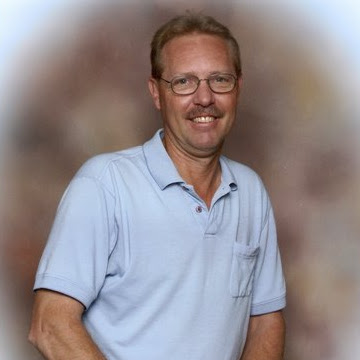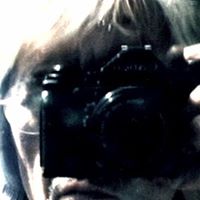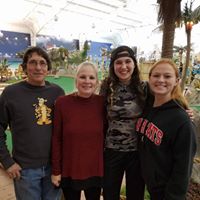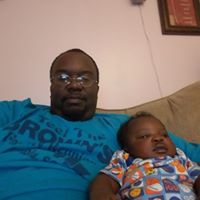William B Weeks
age ~60
from Arvada, CO
- Also known as:
-
- Bill Weeks
- William Week
- Phone and address:
- 7603 W 72Nd Pl, Arvada, CO 80005
William Weeks Phones & Addresses
- 7603 W 72Nd Pl, Arvada, CO 80005
- St Petersburg, FL
- Denver, CO
- 224 N 4Th St #404, Saint Joseph, MO 64501 • 816 676-1776
- 224 N 4Th St APT 401, Saint Joseph, MO 64501
- 301 Broadway #301, Alameda, CA 94501 • 816 676-1776
- Phoenix, AZ
- Guilderland Center, NY
Work
-
Company:Bill weeks
-
Address:301 Broadway #301, Alameda, CA 94501
-
Phones:800 365-1555
-
Position:President
-
Industries:Elementary and Secondary Schools
Education
-
School / High School:New York University School of Law
Ranks
-
Licence:New York - Currently registered
-
Date:2008
Us Patents
-
Systems And Methods For Resolving Ingestible Event Marker (Iem) Contention
view source -
US Patent:20160380708, Dec 29, 2016
-
Filed:Jun 23, 2016
-
Appl. No.:15/190741
-
Inventors:- Redwood City CA, US
Mark Zdeblick - Portola Valley CA, US
Lawrence Arne - Palo Alto CA, US
Jonathan Withrington - San Francisco CA, US
William McAllister - Saratoga CA, US
Alireza Shirvani - Menlo Park CA, US
Jafar Shenasa - San Jose CA, US
Jeremy Frank - San Francisco CA, US
Patricia Johnson - Palo Alto CA, US
Scott Andrews - Redwood City CA, US
Robert Azevedo - Albany CA, US
William A. Weeks - Santa Cruz CA, US
Alberto Berstein - San Jose CA, US
Yashar Behzadi - Anaheim CA, US -
International Classification:H04B 15/00
H04W 72/04
A61B 5/053
A61B 90/00
A61B 5/00
H04B 13/00
H04W 52/18 -
Abstract:Systems, methods, and apparatuses are presented for resolving any interference, noise, and/or collisions caused by two or more ingestible event markers (IEMs) transmitting simultaneously or concurrently. Methods include techniques from the perspective of the IEM for randomly varying signal transmission characteristics in order to avoid collisions with other concurrently transmitting IEMs. Methods also include techniques from the perspective of a receiver for receiving multiple transmission signals from multiple IEMs and for resolving any interference or signal collisions.
-
Optical Assembly
view source -
US Patent:20150212267, Jul 30, 2015
-
Filed:Jan 30, 2014
-
Appl. No.:14/168513
-
Inventors:- Ar's-Hertogenbosch, NL
- Berwyn PA, US
Sandeep Razdan - Millbrae CA, US
William A. Weeks - Ivyland PA, US
Michael Tryson - Hanover PA, US
Jibin Sun - Mountain View CA, US
Haipeng Zhang - Santa Clara CA, US
Jonathan Edward Lee - Harrisburg PA, US
Michael Frank Cina - Elizabethtown PA, US
Jeroen Antonius Maria Duis - Didam, NL -
Assignee:Tyco Electronics Nederland B.V. - Ar's-Hertogenbosch
Tyco Electronics Corporation - Berwyn PA -
International Classification:G02B 6/12
G02B 6/13
G02B 6/122 -
Abstract:An optical assembly comprising: (a) a substrate having a first planar surface; (b) an optical component connected to the substrate and having a second planar surface parallel to the first surface and at least one first optical axis; (c) a plurality of optical fiber stubs having a certain diameter and being disposed at least partially between the substrate and the optical component; (d) at least one of the substrate or the optical component having one or more grooves on the first or second surfaces, respectively, such that each groove is configured to receive one of the plurality of fiber stubs such that each of the fiber stubs protrudes a first distance from the first or second surface to space the first surface the first distance from the second surface; and (e) a least one optical conduit having a second optical axis, the optical conduit being disposed on the first or second surface such that the second optical axis is optically aligned with the first optical axis.
Isbn (Books And Publications)
-
Welding Skills
view source -
Author:William R. Weeks
-
ISBN #:0826930018
-
John Quincy Adams And American Global Empire
view source -
Author:William Earl Weeks
-
ISBN #:0813117798
-
John Quincy Adams And American Global Empire
view source -
Author:William Earl Weeks
-
ISBN #:0813190584
License Records
William David Weeks Md
License #:
4024 - Expired
Category:
Medicine
Issued Date:
Dec 27, 2000
Effective Date:
Oct 1, 2003
Expiration Date:
Oct 1, 2003
Type:
Backup PA Supervisor
William David Weeks Md
License #:
1001 - Expired
Category:
Medicine
Issued Date:
Oct 23, 2000
Effective Date:
Oct 6, 2009
Expiration Date:
Oct 1, 2009
Type:
Physician Assistant Supervisor
William David Weeks Md
License #:
860 - Expired
Category:
Medicine
Issued Date:
Oct 27, 1999
Effective Date:
Feb 26, 2007
Expiration Date:
Oct 1, 2007
Type:
Physician Assistant Supervisor
William David Weeks Md
License #:
1145 - Expired
Category:
Medicine
Issued Date:
Nov 16, 2001
Effective Date:
Jan 9, 2003
Expiration Date:
Oct 1, 2003
Type:
Physician Assistant Supervisor
William David Weeks Md
License #:
1082 - Expired
Category:
Medicine
Issued Date:
May 16, 2001
Effective Date:
Nov 16, 2001
Expiration Date:
Oct 1, 2003
Type:
Physician Assistant Supervisor
William David Weeks Md
License #:
506 - Expired
Category:
Medicine
Issued Date:
Dec 27, 1995
Effective Date:
May 15, 2001
Expiration Date:
Oct 1, 2001
Type:
Physician Assistant Supervisor
William Weeks
License #:
9023 - Expired
Category:
Professional
Issued Date:
Oct 10, 1973
Expiration Date:
Dec 31, 1989
Lawyers & Attorneys

William Copley Weeks, Oakland CA - Lawyer
view sourceAddress:
Bryan Schwartz Law
1330 Broadway Ste 1630, Oakland, CA 94612
510 444-9300 (Office)
1330 Broadway Ste 1630, Oakland, CA 94612
510 444-9300 (Office)
Licenses:
New York - Currently registered 2008
Education:
New York University School of Law
Name / Title
Company / Classification
Phones & Addresses
Putnam Mortgage
Loans
Loans
305 1/2 South Jefferson Ave, PO Drawer 4610, Eatonton, GA 31024
866 384-2142
866 384-2142
President
Bill Weeks
Elementary and Secondary Schools
Elementary and Secondary Schools
301 Broadway #301, Alameda, CA 94501
Chief Information Officer
Key Bank
Personal Credit Institutions
Personal Credit Institutions
409 S Mccaslin Blvd, Broomfield, CO 80027
CTO
Key Government Finance Inc
Miscellaneous business Credit Institutions
Miscellaneous business Credit Institutions
1000 S Mccaslin Blvd, Broomfield, CO 80027
Owner
Bill Weeks
Motion Picture/Video Production
Motion Picture/Video Production
33 Sorrento Way, San Rafael, CA 94901
415 485-9263
415 485-9263
President
WHW ENTERPRISES, INC
Other Heavy Construction
Other Heavy Construction
33 Sorrento Way, San Rafael, CA 94901
415 485-9263
415 485-9263
Principal
Colorado Xtreme Sport
Ret Sporting Goods/Bicycles
Ret Sporting Goods/Bicycles
14912 E Maplewood Dr, Denver, CO 80016
Chief Information Officer
Key Bank
409 S Mccaslin Blvd, Louisville, CO 80027
303 664-4400
303 664-4400
Medicine Doctors

William D. Weeks
view sourceSpecialties:
Family Medicine
Work:
Southwest Family Physicians
8258 Hascall St STE 100, Omaha, NE 68124
402 391-3010 (phone), 402 391-3076 (fax)
Gretna Family Health
11820 Standing Stone Dr, Gretna, NE 68028
402 332-3903 (phone), 402 391-3076 (fax)
Think Whole Person Healthcare
7100 W Ctr Rd, Omaha, NE 68106
402 506-9121 (phone), 402 858-7112 (fax)
8258 Hascall St STE 100, Omaha, NE 68124
402 391-3010 (phone), 402 391-3076 (fax)
Gretna Family Health
11820 Standing Stone Dr, Gretna, NE 68028
402 332-3903 (phone), 402 391-3076 (fax)
Think Whole Person Healthcare
7100 W Ctr Rd, Omaha, NE 68106
402 506-9121 (phone), 402 858-7112 (fax)
Education:
Medical School
University of Nebraska College of Medicine
Graduated: 1981
University of Nebraska College of Medicine
Graduated: 1981
Procedures:
Allergen Immunotherapy
Arthrocentesis
Continuous EKG
Destruction of Benign/Premalignant Skin Lesions
Electrocardiogram (EKG or ECG)
Pulmonary Function Tests
Skin Tags Removal
Vaccine Administration
Vasectomy
Arthrocentesis
Continuous EKG
Destruction of Benign/Premalignant Skin Lesions
Electrocardiogram (EKG or ECG)
Pulmonary Function Tests
Skin Tags Removal
Vaccine Administration
Vasectomy
Conditions:
Acne
Acute Bronchitis
Acute Conjunctivitis
Acute Sinusitis
Acute Upper Respiratory Tract Infections
Acute Bronchitis
Acute Conjunctivitis
Acute Sinusitis
Acute Upper Respiratory Tract Infections
Languages:
English
Description:
Dr. Weeks graduated from the University of Nebraska College of Medicine in 1981. He works in Gretna, NE and 2 other locations and specializes in Family Medicine. Dr. Weeks is affiliated with CHI Health Bergan Mercy, CHI Health Lakeside Hospital, Nebraska Methodist Hospital and Nebraska Orthopaedics Hospital.

William D. Weeks
view sourceSpecialties:
Family Medicine
Work:
Mount Kisco Medical Group
2 Stowe Rd STE 5, Peekskill, NY 10566
914 739-4800 (phone), 914 739-5172 (fax)
2 Stowe Rd STE 5, Peekskill, NY 10566
914 739-4800 (phone), 914 739-5172 (fax)
Languages:
English
Description:
Mr. Weeks works in Peekskill, NY and specializes in Family Medicine. Mr. Weeks is affiliated with New York Presbyterian Hudson Valley Hospital Center.

William Richard Weeks
view sourceSpecialties:
Pediatrics
Flickr
Googleplus

William Weeks

William Weeks

William Weeks

William Weeks

William Weeks

William Weeks

William Weeks

William Weeks
Myspace
Plaxo

William L. Weeks
view sourceSan Diego, CACEO at Southern Pacific Group Do the right thing, Have Balance, Pay Attention, Do your Duty, Live Honorably

William A Weeks
view sourceDenver, CO

William Weeks
view source
william weeks
view sourceClinical Associate Professor at Medaille College

William Arnold Weeks
view source
William J. Weeks
view source
William Edward Weeks Jr.
view source
William Irvin Weeks
view source
William J. Weeks
view source
William Weeks Jr.
view source
William DaProfessor Weeks
view source
William Shannon Weeks
view sourceYoutube
Classmates

William Weeks
view sourceSchools:
Whigham High School Whigham GA 1974-1978
Community:
Connie Pickren

William Weeks
view sourceSchools:
Warrenton High School Warrenton VA 1959-1963

William Weeks
view sourceSchools:
Chicora High School Charleston SC 1959-1963
Community:
Steve Bovie, Patricia Lucas

William Weeks
view sourceSchools:
Chicora High School Charleston SC 1959-1963
Community:
Steve Bovie, Patricia Lucas

William Weeks
view sourceSchools:
Zavalla High School Zavalla TX 1983-1987
Community:
Cecil Hubbard, Katherine Hoxsey, Angela Burnett, Tony Burch, Ray Jones

William Weeks
view sourceSchools:
Wilson Central High School Lebanon TN 1998-2002
Community:
Alason Braun

William Weeks
view sourceSchools:
Washington & Lee High School Montross VA 1981-1985
Community:
Wilbert Pierce, Jay Campbell

William Weeks
view sourceSchools:
Kilmichael High School Kilmichael MS 1953-1957
Community:
Crystal Hinton, Sharon Bibbs, Tony Lee, Robert Smith, Betty Nolan
Get Report for William B Weeks from Arvada, CO, age ~60
















